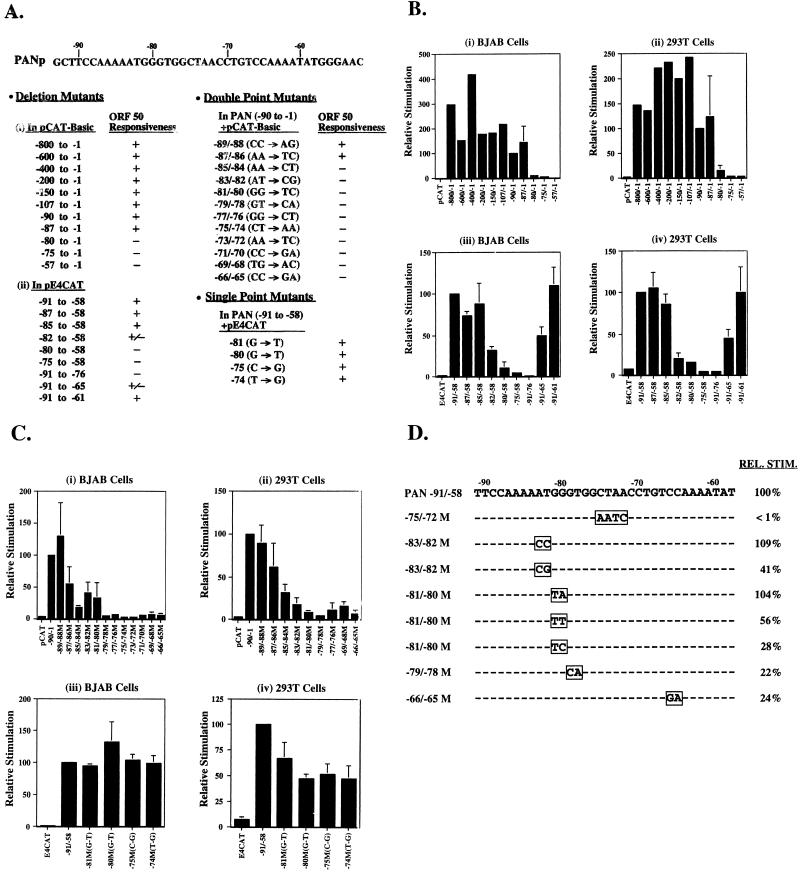FIG. 1.
Definition of an ORF 50 protein response element in the promoter of the PAN gene. (A) Summary of mutagenesis of the PAN promoter. Deletion mutations include 5′-end deletions of the PAN promoter in pCAT-Basic (i) and fragments of PAN promoter transferred to pE4CAT (ii). Double point mutations are in the context of PAN promoter (−90 to −1) in pCAT-Basic; single point mutations are in the PANp fragment (−91 to −58) in pE4CAT. Responsiveness of each construct to ORF 50 is indicated as follows: +, wild-type activity; +/−, about 50% activity; −, markedly impaired activity. (B) Effect of deletion mutations of the PAN promoter on the response to the ORF 50 protein. The deletions were studied in two reporters, pCAT-Basic (i and ii) and pE4CAT (iii and iv). In panels i and ii, the data are expressed relative to the response of the construct (−90 to −1) pCAT. This represented 40-fold stimulation in BJAB and 62-fold stimulation in 293T cells. In panels iii and iv, the data are expressed relative to the construct −91 to −58 inserted into pE4CAT. This represented 40-fold stimulation in BJAB and 36-fold stimulation in 293T cells. (C) Effect of point mutations of the PAN promoter on response to the ORF 50 protein. The response of double point mutants was measured in pCAT (−90 to −1) (i and ii; 31-fold stimulation in BJAB and 61-fold stimulation in 293T cells) and that of single point mutants was measured in E4CAT (−91 to −58) (iii and iv; 40-fold stimulation and BJAB and 36-fold stimulation in 293T cells). (D) Activity of double or quadruple point mutants relative to the response of PANp (−91 to −58) E4CAT.

